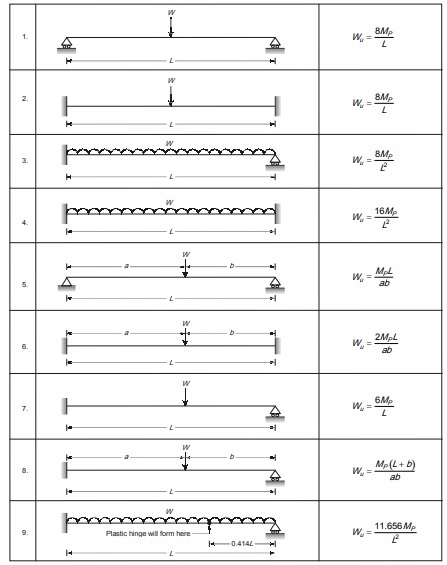Mechanism
When a structure is subjected to a system of loads, it is stable and functional until a sufficient number of plastic hinges have been formed to make the structure unstable. As soon as the structure reaches an unstable condition, it is considered to have been failed. The segments of the beam between the plastic hinges are able to move without any increase of load. This condition is called as mechanism. The concepts of mechanism formation and of virtual work are used in the plastic analysis and design of steel structures.
If an indeterminate structure has redundancy ‘r’, then insertion of ‘r ’ plastic hinge makes it statically determinate and any further insertion of hinge converts this statically determinate structure into a mechanism. Hence for collapse the number of plastic hinges required are (r + 1).
FUNDAMENTAL CONDITIONS IN PLASTIC ANALYSIS
There are three fundamental conditions underlying the plastic analysis as follows:
- Conditions of Static Equilibrium or Equilibrium Condition
At the equilibrium condition, summation of all the forces and moments should be equal to zero.
Mathematically:
- Mechanism Condition or Continuity Condition
The structure at collapse must be capable of deforming as a mechanism due to the formation of plastic hinges or there must be a enough plastic hinges that a mechanism is obtained. - Plastic Moment Condition or Yield Condition
The bending moment at any section must not exceed the full plastic moment ‘MP’ of the section.
THEOREM OF PLASTIC ANALYSIS
- Generally, it is not possible to satisfy all the three conditions of plastic analysis in one operation.
- Solution on the basis of assumed mechanism yields a load-carrying capacity that is either correct or too high while a solution on the basis of a statical moment diagram not violating the plastic moment condition is either correct or too low.
- Therefore, depending on the method adopted, one obtains either an upper limit below which the correct answer lies or a lower limit above which the correct answer will lie.
ADVANTAGES & DISADVANTAGES OF PLASTIC DESIGN OVER ELASTIC DESIGN
Advantages
(a) It is more economical as it makes full use of the material strength beyond the elastic limit.
(b) The design procedures are much simpler and rational in case of plastic method.
Disadvantages
(a) The fabrication is to be done with ductile steel.
(b) The loads are carried by bending and the effects of axial load and shear force on a member are neglected. The theory of simple plastic analysis cannot be applied to trusses, as the members are subjected to axial forces only.
(c) Strength is assumed to be the main criteria.
(d) It is very difficult to obtain the collapse mode if the structure is reasonably complicated.
(e) There is little savings in column design.
(f) It is difficult to design for fatigue.
(g) Lateral bracing requirements are more stringent than the elastic design.
COLLAPSE LOAD OF SOME STANDARD CASES
1. Concentrated Load of Standard Cases
(i) Concentrated Load at Centre
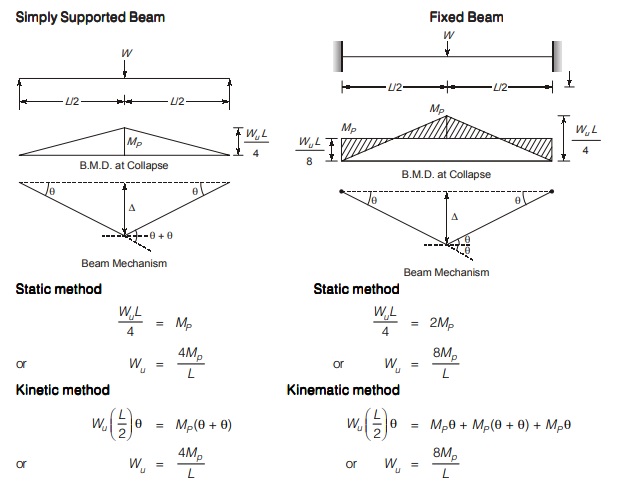
(ii) Eccentric Load
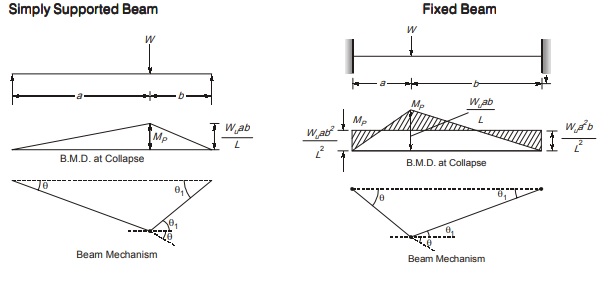
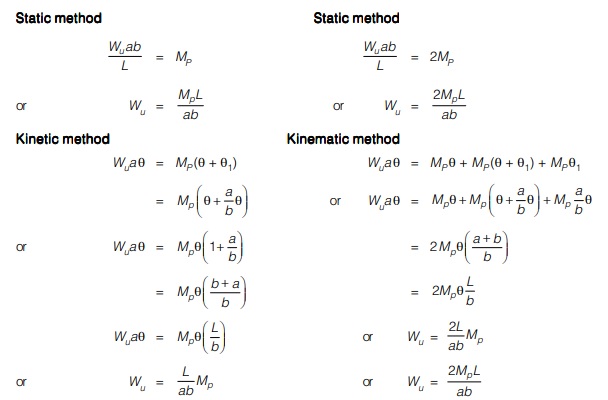
(iii) Uniformly Load distributed
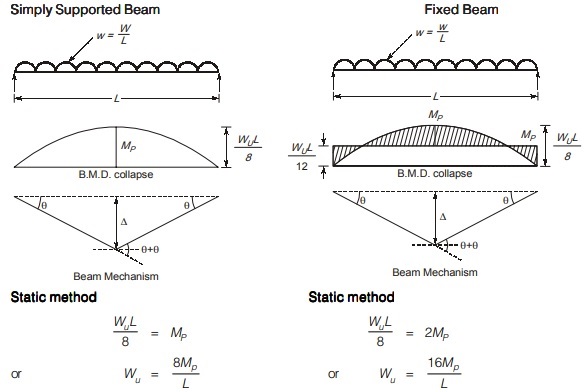

(iv) Concentrated Load
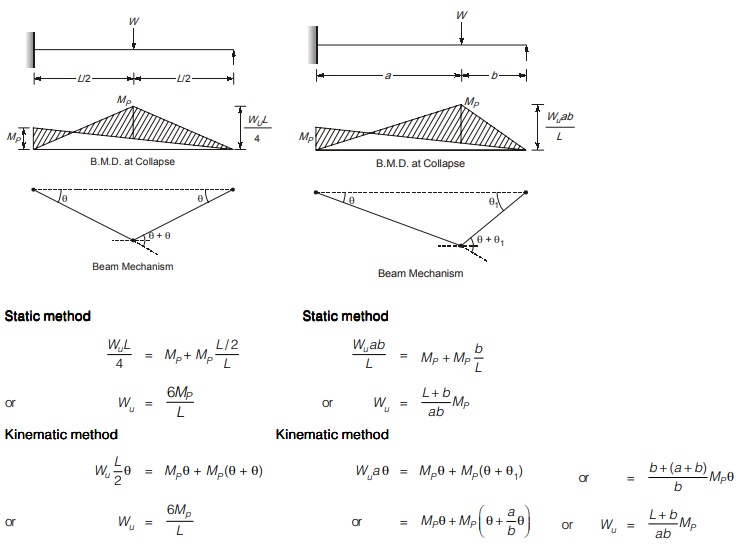
Collapse loads of some standard arrangements:
